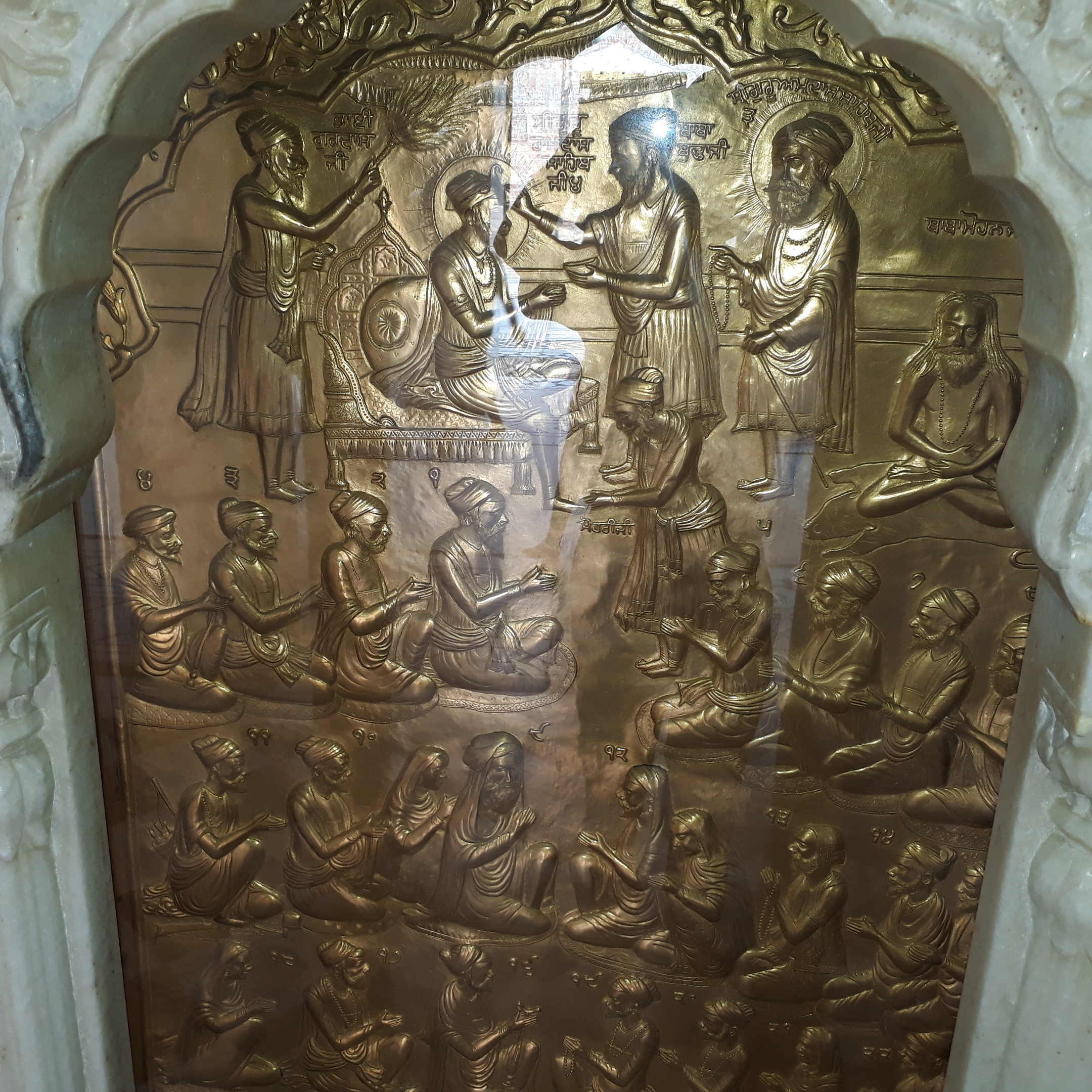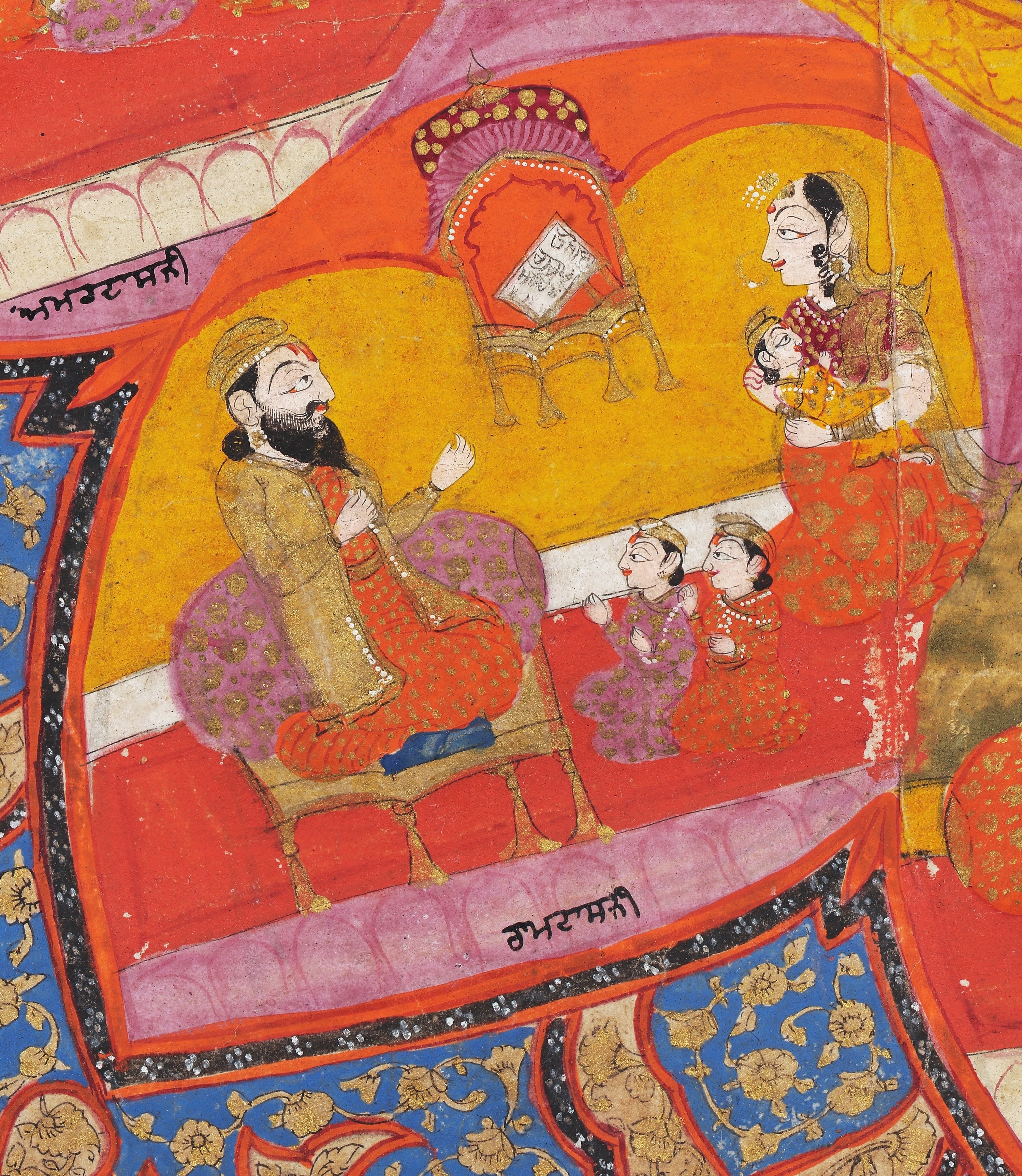|
Piri System
The Piri System was part of the Sikh missionary administrative organization founded by the third Sikh guru, Guru Amar Das, for the purpose of propagating Sikhism amongst women. The system was significantly expanded by the seventh Sikh guru, Guru Har Rai. Each Piri was a Sikh missionary seat and administrative unit. A similar Manji system existed for the spread of Sikhism among men. Meaning of ''Piri'' A ''Piri'' is a very small wooden cot (taken as the ''seat of authority'' in this context) from which the Sikh ''Piris'' (female Sikh preachers, holders of seat of religious authority) would teach Sikhism to other women. The word Manji also means a wooden cot, similarly used to denote ''seat of Sikh religious authority'' for preaching Sikhism to men. Founding of Piri system by Guru Amar Das Guru Amar Das started the Piri and Manji systems by appointing 94 men as ''Manjis'' and 52 women as ''Piris'' for the spread of Sikhism. Masand system Sikh Gurus had established a Masand sys ... [...More Info...] [...Related Items...] OR: [Wikipedia] [Google] [Baidu] |
Guru Amar Das
Guru Amar Das (Gurmukhi: ਗੁਰੂ ਅਮਰ ਦਾਸ, pronunciation: ; 5 May 1479 – 1 September 1574), sometimes spelled as Guru Amardas, was the third of the Ten Gurus of Sikhism and became Sikh Guru on 26 March 1552 at age 73. Before becoming a Sikh (Shishya from Sanskrit), on a lovely pilgrimage after having been prompted to search for a ''guru'', he heard his nephew's wife, Bibi Amro, reciting a hymn by Guru Nanak, and was deeply moved by it. Bibi Amro was the daughter of Guru Angad, the second and then current Guru of the Sikhs. Amar Das persuaded Bibi Amro to introduce him to her father and in 1539, Amar Das, at the age of sixty, met Guru Angad and became a Sikh, devoting himself to the Guru. In 1552, before his death, Guru Angad appointed Amar Das as Guru Amar Das, the third Guru of Sikhism. Guru Amar Das was an important innovator in the teachings of Guru who introduced a religious organization called the Manji system by appointing trained clergy, a system t ... [...More Info...] [...Related Items...] OR: [Wikipedia] [Google] [Baidu] |
Sikhism
Sikhism (), also known as Sikhi ( pa, ਸਿੱਖੀ ', , from pa, ਸਿੱਖ, lit=disciple', 'seeker', or 'learner, translit=Sikh, label=none),''Sikhism'' (commonly known as ''Sikhī'') originated from the word ''Sikh'', which comes from the Sanskrit root ' meaning "disciple", or ' meaning "instruction". Singh, Khushwant. 2006. ''The Illustrated History of the Sikhs''. Oxford University Press. . p. 15.Kosh, Gur Shabad Ratnakar Mahan. https://web.archive.org/web/20050318143533/http://www.ik13.com/online_library.htm is an Indian religion that originated in the Punjab region of the Indian subcontinent,"Hinduism, Buddhism, Jainism and Sikh originated in India." around the end of the 15th century CE. It is the most recently founded major organized faith and stands at fifth-largest worldwide, with about 25–30 million adherents (known as Sikhs) .McLeod, William Hewat. 2019 998 Sikhism developed from the spiritual teachings of Guru Nanak (1469–1539), the faith's first g ... [...More Info...] [...Related Items...] OR: [Wikipedia] [Google] [Baidu] |
Guru Har Rai
Guru Har Rai (Gurmukhi: ਗੁਰੂ ਹਰਿ ਰਾਇ, pronunciation: ; 16 January 1630 – 6 October 1661) revered as the ''seventh Nanak'', was the seventh of ten Gurus of the Sikh religion.Har Rai: Sikh Guru Encyclopedia Britannica (2015) He became the Sikh leader at age 14, on 3 March 1644, after the death of his grandfather and the sixth Sikh leader Guru Hargobind. He guided the Sikhs for about seventeen years, till his death at age 31. Guru Har Rai is notable for maintaining the large army of Sikh soldiers that the sixth Sikh Guru had amassed, yet avoiding military conflict. He supported the moderate Sufi influenced |
Sikh
Sikhs ( or ; pa, ਸਿੱਖ, ' ) are people who adhere to Sikhism, Sikhism (Sikhi), a Monotheism, monotheistic religion that originated in the late 15th century in the Punjab region of the Indian subcontinent, based on the revelation of Guru Nanak. The term ''Sikh'' has its origin in the word ' (), meaning 'disciple' or 'student'. Male Sikhs generally have ''Singh'' ('lion'/'tiger') as their last name, though not all Singhs are necessarily Sikhs; likewise, female Sikhs have ''Kaur'' ('princess') as their last name. These unique last names were given by the Gurus to allow Sikhs to stand out and also as an act of defiance to India's caste system, which the Gurus were always against. Sikhs strongly believe in the idea of "Sarbat Da Bhala" - "Welfare of all" and are often seen on the frontline to provide humanitarian aid across the world. Sikhs who have undergone the ''Amrit Sanchar'' ('baptism by Khanda (Sikh symbol), Khanda'), an initiation ceremony, are from the day of thei ... [...More Info...] [...Related Items...] OR: [Wikipedia] [Google] [Baidu] |
Sikh Manji
A Manji (Punjabi: ਮੰਜੀ ਪ੍ਰਥਾ ) was a Sikh religious administrative unit for the propagation of Sikhism towards men. It was part of the Sikh missionary administrative organization founded by Guru Amar Das, the third Guru of Sikhism. Manji refers to each zone of religious administration with an appointed chief called ''sangatias'', with officially appointed representatives known as a ''masand''. It had been conceptually similar in its aims to the diocese system in Christianity, and had been similarly important in Sikh missionary activity. The word ''Manji'' or ''Manja'' literally means a cot (taken as the ''seat of authority'' in this context). A similar administrative unit existed for women. It was known as a Piri and was part of the Piri System, Piri system. Guru Amar Das divided the Sikh congregation areas into twenty-two Manjis. He appointed a local preacher to be in-charge of each of the Manjis. For this purpose, a large group of 146 followers were trained ... [...More Info...] [...Related Items...] OR: [Wikipedia] [Google] [Baidu] |
Sikh Gurus
The Sikh gurus (Punjabi: ਸਿੱਖ ਗੁਰੂ) are the spiritual masters of Sikhism, who established this religion over the course of about two and a half centuries, beginning in 1469. The year 1469 marks the birth of Guru Nanak, the founder of Sikhism. He was succeeded by nine other human gurus until, in 1708, the '' Guruship'' was finally passed on by the tenth guru to the holy Sikh scripture, Guru Granth Sahib, which is now considered the living Guru by the followers of the Sikh faith. Etymology and definition ''Guru'' (, ; sa, गुरु, Punjabi: ਗੁਰੂ, IAST: ''guru'') is a Sanskrit term for a "teacher, guide, expert, or master" of certain knowledge or field. Bhai Vir Singh, in his dictionary of Guru Granth Sahib describes the term Guru as a combination of two separate units: "Gu;(ਗੁ)" meaning darkness and "Rū;(ਰੂ)" which means light. Hence, Guru is who brings light into darkness or in other words, the one who enlightens. Bhai Vir Singh's defini ... [...More Info...] [...Related Items...] OR: [Wikipedia] [Google] [Baidu] |
Masand
A masand was a representative and tithe collector in Sikhism. They were an officially appointed missionary minister representing the Sikh Guru, who baptized conversions to Sikhism, and collected ''dasvandh'' ("the tenth" of income) as an offering to the Sikh community and religious establishment. A masand forwarded the collected amount to the Sikh guru. Etymology The word masand (Punjabi: ਮਸੰਦ) is an adaptation of the Persian term ‘masnad’ (Punjabi: ਮਸਨਦ), which refers to ‘a seat’ that is at a lower level than the throne. The Guru was the highest authority while masands were emplaced to spread the message of Sikhism and given the authority to baptize individuals converting to Sikhism. During conversions happening in the absence of the Guru, the new convert would touch the feet of the masand or drink the water they had dipped their toe in, in order to become initiated into the Sikh religion. History: Origin and Structure It is unclear when the m''asan ... [...More Info...] [...Related Items...] OR: [Wikipedia] [Google] [Baidu] |
Mina (Sikhism)
The Mīnās (Gurmukhi: ਮੀਣਾ; ''mīṇā'') were a heretical sect of Sikhs that followed Prithi Chand (1558–April 1618), the eldest son of Guru Ram Das, after his younger brother Guru Arjan was selected by the Guru to succeed him. Prithi Chand would vigorously contest this, attracting a portion of Sikhs to his side who followers of Guru Arjan referred to as ਮੀਣੇ ''mīṇe'', meaning "charlatans," "dissemblers," or "scoundrels." They sustained their opposition to the orthodox line of Gurus through the seventeenth century, and upon Guru Gobind Singh's founding of the Khalsa in 1699, they were declared by him, as well as by Khalsa ''rahitnamas'' (codes of conduct), as one of the ''Panj Mel'', or five reprobate groups, that a Sikh must avoid. They are occasionally referred to in the more neutral terms ''Sikhān dā chhotā mel'' ("those who remained with the true Guru lineage for a short time") or as the ''Miharvān sampraday'' (Gurmukhi: ਮਿਹਰਵਾਨ ਸੰਪ ... [...More Info...] [...Related Items...] OR: [Wikipedia] [Google] [Baidu] |
Gender And Sikhism
Gender is the range of characteristics pertaining to femininity and masculinity and differentiating between them. Depending on the context, this may include sex-based social structures (i.e. gender roles) and gender identity. Most cultures use a gender binary, in which gender is divided into two categories, and people are considered part of one or the other (boys/men and girls/women);Kevin L. Nadal, ''The SAGE Encyclopedia of Psychology and Gender'' (2017, ), page 401: "Most cultures currently construct their societies based on the understanding of gender binary—the two gender categorizations (male and female). Such societies divide their population based on biological sex assigned to individuals at birth to begin the process of gender socialization." those who are outside these groups may fall under the umbrella term ''non-binary''. Some societies have specific genders besides "man" and "woman", such as the hijras of South Asia; these are often referred to as ''third gende ... [...More Info...] [...Related Items...] OR: [Wikipedia] [Google] [Baidu] |
Sikh Practices
Sikh practices () are simple and practical guidelines laid out by the Gurus for the practice of the "Sikh way of life". The Gurus emphasise that a Sikh should lead a disciplined life engaged in Naam Simran, meditation on God's name, Kirat Karo, living an honest life of a house-holder, and Vand Chaako, sharing what one has with the community. This translates into hard work, honest living, love of fellow humans and through them service of the God, the primal power. This way of life is said to have been stripped of complications, myths, jargon, rituals and exploitation of man by man in the name of religion. No benefits are gained by where and to which family the person is born to – All have to undertake the rigours of Simran (meditation) and Sevā (selfless service) to progress spiritually. The Guru Granth Sahib asks the Sikh to "Practice truth, contentment and kindness. Disciplined life The Sikh is required to undertake the following observances: # Wake up very early in the morni ... [...More Info...] [...Related Items...] OR: [Wikipedia] [Google] [Baidu] |





